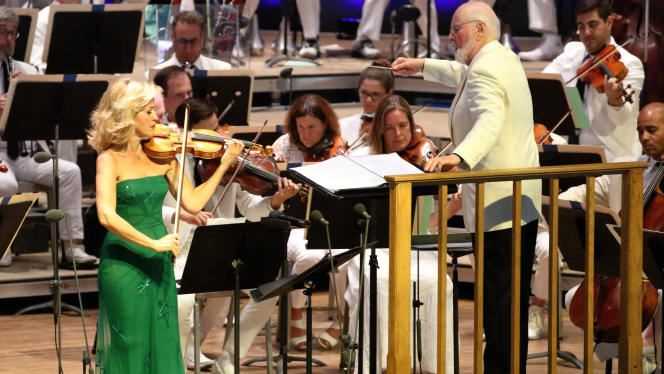ARTE.TV – ON DEMAND – CONCERT
Five-time Oscar winner John Williams, born 1932, is a film music giant: The infernal tower (1974), Jaws (1975), AND (1982), Indiana Jones (1984), Jurassic Park (1993), the saga Star wars (1977-2019), and the first three Harry potter (2001-2004), among many other examples, it is him.
An excellent pianist (classical and jazz) by training, he practices as such in Hollywood by playing the keyboard part in West Side Story (1961), and being Audrey Hepburn’s tutor in Funny face (1957). John Williams binds to the great Bernard Herrmann, the musician of Alfred Hitchcock, and, as arranger, collaborates with the very great composers of Hollywood like Alfred Newman, Dimitri Tiomkin or Franz Waxman.
From 1956, he signed his first scores for television and cinema. His meeting with Steven Spielberg is fruitful: a year after the music for Sugarland Express (1974), that of Sea teeth won him the second Oscar of his career – the first was for the adaptation for the big screen of the original music, by Jerry Bock, byA violin on the roof (1971), by Norman Jewison. John Williams then becomes Spielberg’s official composer.
Like many of his august colleagues, he also composes for the concert. But unlike Bernard Herrmann, who despised Hollywood, and Erich Wolfgang Korngold, inconsolable to be forgotten in Europe when he had been considered there, before the war, as the “new Mozart”, John Williams will never distinguish between these two musical spheres. He himself will qualify his eclecticism as “Chameleonic”.
Orchestral beauty
If Korngold wrote, more or less, in the same way in Vienna and Hollywood (his Violin Concerto, from 1947, is also made up of numerous extracts from his film scores), Williams offers concert music that is less tonal and consonant than that which he generally delivers to studios, except in the case of horror films or of Science fiction – Minority report (2002), by Spielberg, for example. But we find there the lyricism, the orchestral beauty and the rhythmic vigor which are its mark in the cinema.
His Concerto n ° 2 for violin and orchestra, premiered at the Tanglewood Festival, in the United States, navigates between the well-sounding atonalism of Violin Concerto (1935) by Alban Berg and the ethereal orchestral refinement of Toru Takemitsu – a Japanese composer loved by John Williams and who has also signed many film scores (for directors Akira Kurosawa and Nagisa Oshima in particular). The sequences in which the violin expresses itself in a rhapsodic way, accompanied by the harp placed in the foreground of the orchestra, have something of the Far East.
The German violinist Anne-Sophie Mutter, a close friend of John Williams, who arranged some of his film music for her, still plays this beautiful concerto with the score in front of her eyes, but already like a classic, under the direction of the composer at the head of the famous Boston Symphony Orchestra.
Violin Concerto No.2, by John Williams, by Anne-Sophie Mutter (violin), Boston Symphony Orchestra. Available on Arte.tv until October 31.
